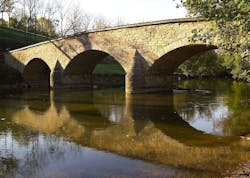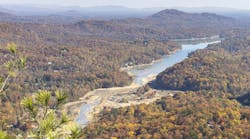Watershed Study Shows Impact of Green Infrastructure
A University of Maryland (UMD) research study has connected climate change to storm water management. According to Phys.org, UMD specifically connected climate change to urban and suburban storm water management. The goal is to ultimately increase resiliency to major storm events.
The new study examines two watersheds and show how small decentralized management practices such as rain gardens can make an impact to the watershed’s resiliency. According to Phys.org, the study used predictive modeling to determine what climate change will need from future storm water management systems.
“What we design now is in place for 20 or 30 years, so we should design it with future climate conditions in mind as opposed to what the past rain has looked like," said Mitchell Pavao-Zuckerman, assistant professor in Environmental Science & Technology, according to Phys.org. "This work puts emphasis on what's happening in local upland spaces that has immediate implications for the people who are living in these watersheds for future flood mitigation, but connects this to the broader issues of how increased runoff links to the health of the Chesapeake Bay."
UMD researchers looked at what suburban areas are doing to manage storm water currently and how implementing green infrastructure may help these systems hold up in the future. According to Phys.org, researchers used data from the U.S. Geological Survey (USGS) from two watersheds in Clarksburg, Md., for the study. One watershed has multiple larger-scale detention ponds or storm water basins, while the other has green infrastructure such as rain gardens, dry detention ponds and sand filters. According to Phys.org, the watersheds were monitored before and after development to see green infrastructure’s impact.
"Green infrastructure consists of things with a much smaller footprint than a stormwater basin, but there are more of them in the watershed, so it comes down to measuring the aggregated effect of a lot of small things in one watershed rather than one or two large things in another watershed," Pavao-Zuckerman said, according to Phys.org. "Partnering with the USGS to have a good data source at the watershed scale and finding the right model for the question was key."


